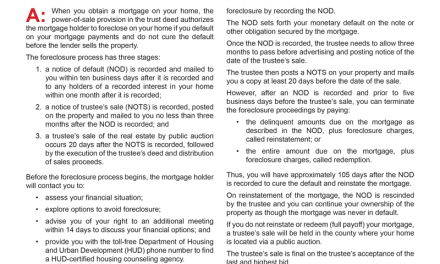Video update: August 2022
California home sales volume continued to fall back in May 2022, down from both the prior month and a year earlier. This was the second consecutive month-over-month decrease, atypical for the spring sales cycle.
Sales volume usually rises from an annual low point experienced each January to a peak mid-year. Therefore, yet another month of lower sales volume is sounding alarm bells for sellers.
40,700 new and resale home transactions closed escrow in California during May 2022. The number of homes sold in April was 4% below the prior month and 13% below a year earlier, amounting to 6,300 fewer sales. For reference, the rapid pace of sales experienced in California since 2020 began to taper off in the second half of 2021, continuing in 2022.
Due to the uncharacteristically steep annual sales volume rise that occurred early in 2021 — due to both fear of missing out (FOMO) on low inventory and homebuyers taking advantage of historically low interest rates and stimulus boosts — the typical year-over-year comparisons are not as useful today. Instead, consider comparing today’s sales volume to the last “normal” year we experienced: 2019.

Here, we see the path of home sales volume in 2019 (the black line) alongside sales volume thus far in 2022 (the orange line). The two deviant years of 2020 and 2021 are dashed lines (green and purple, respectively).
While sales volume started off 2022 at a faster pace than 2019, after peaking in March, it has quickly tapered off to below 2019 levels. Thus, after two years of volatile, atypical home sales volume, expect sales volume in 2022 to end the year slightly below 2019.
Along with a deep cut to home price potential, 2022’s rapidly rising interest rates are causing homebuyer hesitation, pushing sales to slow.
The government’s pandemic-era efforts to bridge the gap are waning
At an annual rate, 2021 ended with 536,600 annual home sales in California. This was a significant 97,400 more home sales than took place in 2020, amounting to a 22% annual increase.
However, this heightened performance follows several years of flat-to-down sales volume (the bumpy plateau recovery following the 2009 foreclosure crisis and financial crash). And yet, despite recent gains, 2021’s strong year for home sales volume was still 29% below the peak year for sales volume in 2005.
Why were the 2021 increases in home sales volume and home prices so strong compared to recent years?
The federal government introduced a number of measures to create a bridge for consumers, to get them from the moment of the 2020 recession through to the end of the pandemic response. The result was a buoyed housing market, with low interest rates and extra cash ensuring turnover continued for renters, homebuyers, sellers and investors.
The government’s steps included:
- keeping interest rates artificially low in 2020-2021, held down by the Fed’s purchase of mortgage-backed bonds (MBBs) and zero-level rate on its benchmark interest rate;
- an eviction and foreclosure moratorium, which allowed renters and homeowners unable to make housing payments to remain in their homes (and kept these homes off the market, stifling inventory);
- individual stimulus checks, which fueled consumer spending not just for those who lost their jobs during the 2020 recession, but for consumers across the income spectrum;
- an ongoing pause on student loan payments, which also enabled more consumer spending, propping up the economy; and
- instituting and expanding the Paycheck Protection Program (PPP) and Economic Injury Disaster Loan grant program to help small businesses stay afloat.
All this federal action helped drive up enthusiasm (and prices) not just for real estate, but for assets of all types.
However, while the government created a bridge to carry consumers across the pandemic-era recession, the bridge also delayed the inevitable. As the government’s stimulus measures have now drawn to an end, the economy is on the path towards its next recession.
California home sales in 2022 and beyond
Home sales will continue to fall back in 2022, due to:
- rapidly rising mortgage interest rates, which have caused buyer purchasing power to decrease a whopping 26% from a year earlier as of June 2022;
- 2021’s expiration of the foreclosure moratorium, which has caused a backlog of forced sales to hit the market, creating a further drag on home prices and discouraging homebuyers;
- lower homeowner turnover as buyer FOMO turns to relief in the face of rising rates and rising inventory; and
- the ongoing recovery of job losses of 2020, over 232,000 of which are still absent from the jobs market as of May 2022.
The housing market won’t begin a consistent recovery until California recovers the historic job losses of 2020. This jobs recovery will likely take shape heading into 2023 — at which point the second act to the 2020 recession will arrive.
Related article:
Can the Fed cool inflation without implementing another recession?
The difference between seasonal and long-lasting trends
Home sales vary from month-to-month for a variety of reasons, most significant being homebuyer demand. This demand is influenced by several factors currently at work in California’s homebuying market, including:
- seasonal differences, as sales volume tends to peak mid-year, falling into the slow winter months;
- mortgage interest rates, which were at historic lows in 2020-2021 but have jumped significantly in 2022;
- homebuyer confidence, which has swung wildly since the outset of the 2020 recession and continues its volatile path through today’s recession hangover;
- available multiple listing service (MLS) inventory, which remains well below homebuyer demand at the start of 2022; and
- in 2020-2021, homebuyer fear-of-missing-out (FOMO), which pushed both sales volume and prices over sustainable heights.
Year-to-date (YTD) home sales volume can be a strong predictor of annual sales volume. As of May 2022, YTD sales volume is 10% below a year earlier.
firsttuesday forecasts sales volume to fall below 2021 throughout 2022, tempered by rising interest rates, a still-recovering jobs market — and more sober homebuyers.
To read more about home sale trends and firsttuesday’s analysis, view California’s home sales volume charts.













